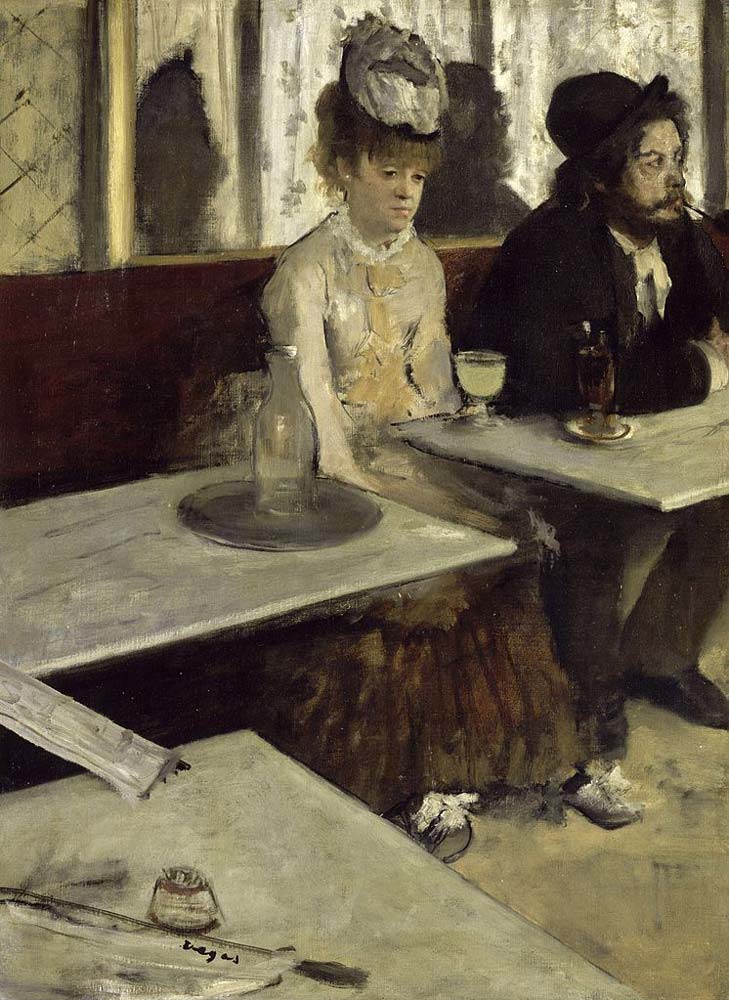| L’Absinthe | |
|---|---|
 |
|
| Artist | Edgar Degas |
| Year | 1876 |
| Medium | Oil on canvas |
| Location | Musée d’Orsay, Paris |
| Dimensions | 36.2 in × 26.8 in |
| 92 cm × 68 cm | |
| Famous Paintings by Edgar Degas | |
| A Cotton Office in New Orleans | |
| The Dance Class | |
| L’Absinthe | |
| Place de la Concorde | |
| Miss La La at the Cirque Fernando | |
| At the Races | |
| Interior | |
| The Bellelli Family | |
| Young Spartans Exercising | |
| More Famous Works |
L’Absinthe is a painting in oils on canvas by Edgar Degas that was first exhibited in 1876. It is a relatively small painting, measuring 36.2 by 28.8 inches, and is presently part of the Degas collection held in the Musee d’Orsay in Paris.
Composition
The painting shows two people sitting in the Café de la Nouvelle Athènes. The café was a popular venue for several impressionist artists at that time. Apart from Degas, the café was also frequented by Van Gogh and Matisse.
The center of the painting depicts the actress Ellen Andree, looking down sullenly at a glass of absinthe. Beside her, to her left, sits a rather scruffy looking Marcellin Gilbert Desboutin, who was a painter, author and printmaker.
The Subjects
Interestingly, both people in the painting appeared in works by other famous artists. Ellen Andree is one of the subjects in Paul Cezanne’s painting Luncheon of the Boating Party, painted about four years later. In that picture, Andree is portrayed holding a glass to her mouth and is the only person in the painting who is drinking.
Marcellin Desboutin was the subject of a portrait by Edouard Manet in 1875. Desboutin was well-travelled and lived for a time in Florence in Italy. It was in Florence that he met and befriended Degas, who was then studying at the Uffizi.
Negative Criticism
The painting was slated by art critics when it was first exhibited, and even described as ugly. So hostile was the reception that the painting remained unsold and was placed in storage for sixteen years.
It was exhibited again in 1892, but the reception was still extremely negative, with some people actually booing at the work. The following year, the painting was exhibited in England, where it also received trenchant criticism. However, English criticism tended to be about what was seen as the low moral standards depicted rather than the painting’s artistic merits.